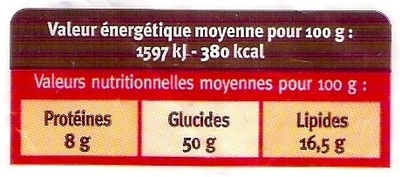Brioche tressée pur beurre - La Boulangère - 500 g
Important note: this product is no longer sold. The data is kept for reference only. This product does not appear in regular searches and is not taken into account for statistics.
This product page is not complete. You can help to complete it by editing it and adding more data from the photos we have, or by taking more photos using the app for Android or iPhone/iPad. Thank you!
×
Some of the data for this product has been provided directly by the manufacturer LA BOULANGERE & Co.
Barcode: 3284230002004 (EAN / EAN-13)
Common name: Brioche tressée pur beurre
Quantity: 500 g
Brands: La Boulangère
Categories: Snacks, Sweet snacks, Sweet pastries and pies, Viennoiseries, Brioches, Pure butter brioche
Labels, certifications, awards:
Green Dot, fr:Saveurs de l'Année, fr:Saveurs de l'Année 2012, Saveurs-de-l-annee-france
Countries where sold: France
Matching with your preferences
Environment
Carbon footprint
Packaging
Transportation
Report a problem
Data sources
Product added on by sto
Last edit of product page on by org-la-boulangere-co.
Product page also edited by mbe, packbot, segundo.









